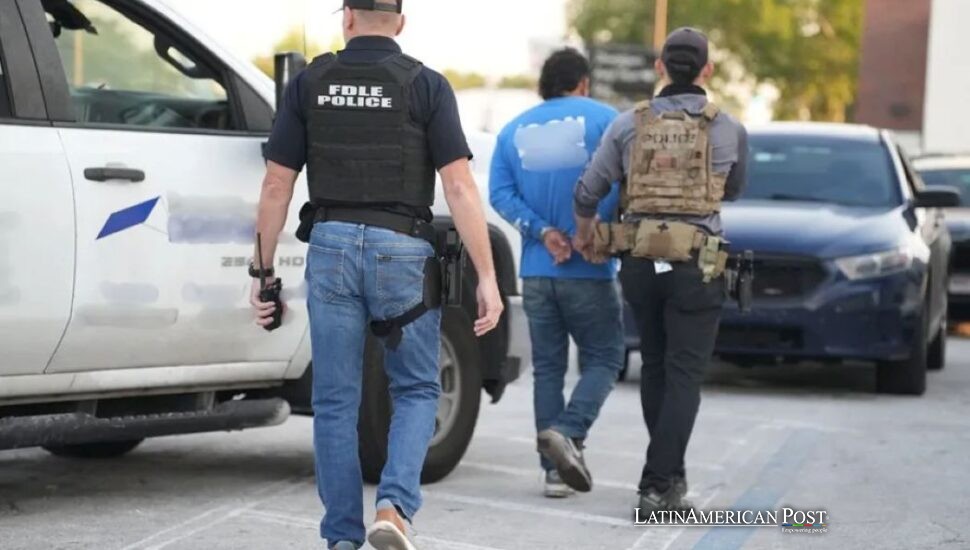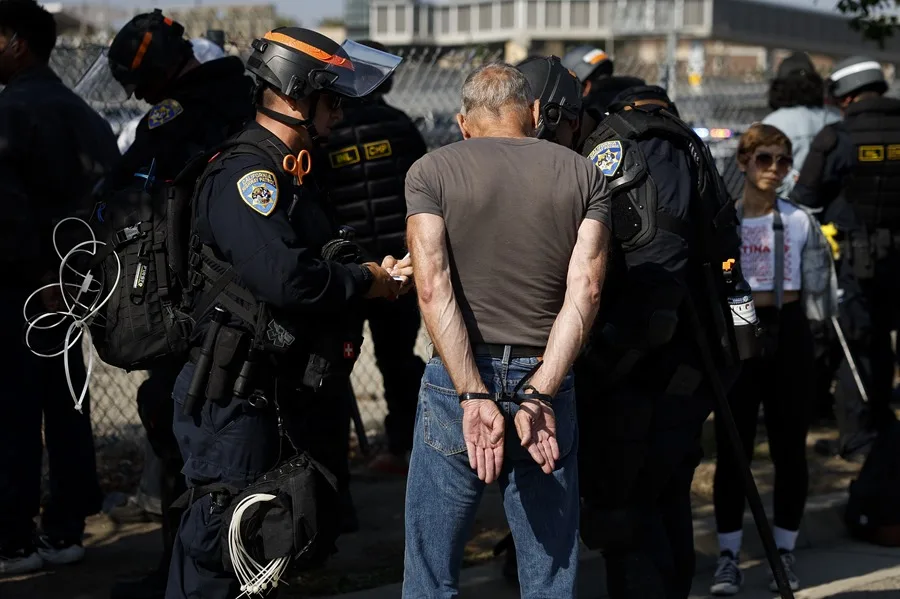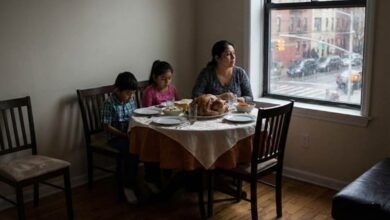Immigration Raids Reshape Latino Shopping Streets, and Push Consumers Online

In Newark’s Ironbound and other Latino hubs, Trump-era immigration raids have hollowed out foot traffic, spooked shoppers, and squeezed small businesses already operating on razor-thin margins. Reuters reporting shows the gap widening between brick-and-mortar survival and the digital lifelines consumers now rely on.
Fear on the Sidewalks, Clicks at the Checkout
In Newark’s Ironbound district, Rosa Ludena stands behind the counter of her electronics shop, watching a wall of phone cases shine under fluorescent light. For twenty-five years, the Ecuador-born U.S. citizen built her livelihood one charger, one repair, one customer at a time. Now she waits. And waits.
“People are afraid to go out because of immigration raids,” she told Reuters, explaining how foot traffic thinned after a high-profile January operation at a nearby fish market. Families who once browsed in groups now order from couches. Strangers hurry past the windows instead of stepping inside. “If sales decrease, how will I pay rent?”
Ludena is not alone. According to two dozen business owners, community leaders, analysts, and corporate executives interviewed by Reuters, raids conducted from Home Depot parking lots to strawberry fields to a Hyundai battery plant have reshaped day-to-day routines.
The White House, responding to Reuters, insisted the operations targeted criminals and would “create an environment in which all businesses can thrive.” Yet officials also acknowledged that non-criminals were sometimes swept up, a detail that lands differently for a shopper weighing whether a grocery run could put their family at risk.
As Mark Mathews, chief economist at the National Retail Federation, told Reuters, the shift to online purchasing in fearful communities is “unsurprising.” A fear of lights and sirens becomes a fear of errands, and brick-and-mortar stores feel the chill first.
A New Map of Risk for Main Street
For small proprietors without e-commerce tools, the fallout is swift. “These aren’t big businesses with websites,” said Oliver de la Garza of Proyecto Azteca, describing how a June ICE raid at an Alamo, Texas flea market cut the vendor count roughly in half,from about 500 to near 250. Reuters could not independently confirm the exact figure, but the pattern recurs from New Jersey to the Rio Grande Valley: when uniforms appear, customers disappear.
In Newark, Valerie Bandras, co-owner of Urban Eyes Vision Center, told Reuters her shop lost foot traffic at the exact moment it usually surges. “People are afraid to go outside,” she said.
A few blocks away, the manager of Tien Rong Gift Shop, who asked to be identified as Shan, described “weeks of sluggish sales” and an unwinnable battle: “We can’t compete with the Walmarts of the world on price or an online presence.”
Even mid-sized chains feel the drag. Gordon-Haskett data cited by Reuters showed Ross Stores, a favorite among Latino shoppers, losing visits in heavily Hispanic ZIP codes through mid-July,while Walmart’s website absorbed much of the deflection. Walmart’s online sales jumped 26% in the May-July quarter, its strongest spring-summer surge since the pandemic, and a company spokesperson told Reuters that pickup and delivery are rising “across demographics.”
Private-equity calculations are shifting too. Reuters reported that Apollo Global Management is exploring a sale of Heritage Grocers Group, a Hispanic-focused chain, as softened demand and raid fears weigh on forecasts. It is a quiet signal with loud implications: investors see the headwinds, and capital follows confidence.

Corporate Signals and the Data Behind the Anxiety
Boardrooms are not immune to the tremors. Heineken CEO Dolf van den Brink told shareholders on Oct. 23 that U.S. sales,including brands beloved by Hispanic customers,had been “highly disrupted” by “what’s happening with immigration, the ICE raids,” Reuters reported.
Constellation Brands and Coca-Cola have also reported weaker engagement among Latino buyers this year, though neither explicitly tied the slump to enforcement. Still, the numbers speak loudly:
- Mass-retail visits among Hispanic shoppers fell 14.7% year-over-year from April to June, Kantar told Reuters.
- Non-Hispanics dipped only 4.5% in the same period.
- Dollar-store visits dropped nearly 6% among Hispanics, even as other groups rose 3%.
Parallel Kantar surveys found Hispanic families reporting a sharper decline in personal safety, linking the shift to “changes in immigration policy … heightening fear and uncertainty.” That fear does not distinguish between undocumented and documented shoppers, Kantar’s Julie Craig told Reuters. “There is that fear of being harassed, and there is that fear of being watched and singled out.”
Of course, e-commerce was rising anyway. Morningstar analyst David Swartz noted to Reuters that the pandemic normalized online behavior across all demographics. But the current momentum is unmistakable: the share of Hispanic respondents who report shopping online hit a record 60% in the July-September quarter.
Retail earnings tell the same story. Shoe Palace, a 200-store chain with a largely Latino customer base, saw visits drop sharply from February to April,a decline CEO Régis Schultz directly attributed to enforcement pressure. Online sales “have been OK,” he said, but brick-and-mortar revenue fell 5.5% year-over-year.
Meanwhile, Reuters/Ipsos polling shows Trump’s approval among Hispanics slipping to 32% and support for his immigration policy falling from 50% in February to 42% in late October, a reminder that consumer sentiment and political sentiment often move together.
Who Wins, Who Loses, and What Comes Next
The winners are companies with logistics fleets, delivery windows, BOPIS lanes, and the kind of digital muscle that turns fear into revenue. The losers are micro-retailers with one point-of-sale system, one storefront, and customers who increasingly weigh safety against every errand.
The White House argues that enforcement ultimately makes communities safer,and therefore better for business. But for Ludena on Ferry Street, safety feels like emptiness: fewer children browsing phone cases, fewer parents asking for charger recommendations, more quiet hours that should be loud.
The shift is not irreversible. Cities can help small shops build online storefronts; business associations can coordinate “safe shopping hours”; retailers can meet anxious customers with curbside pickup, flexible delivery, and clear communication. But none of that changes a core truth revealed by Reuters’ reporting: high-visibility raids ripple through local economies faster than any policy memo acknowledges.
As Ludena closes her shop for the night, the wall of phone cases glints under the final switch of the lights. On the sidewalk, the evening feels thinner than it used to. The customers she built her life around are still shopping,but now they do it from behind locked doors, with a finger on the trackpad instead of a hand on her shop’s doorknob.
This is the new arithmetic of Latino retail: fewer footsteps, more clicks, and a future where the fears that keep shoppers home reshape not just politics but the survival of the most vulnerable storefronts on the block.
Also Read: Latin American Culture Won’t Just Add Flavor to the World, It Will Set the Menu By 2026





